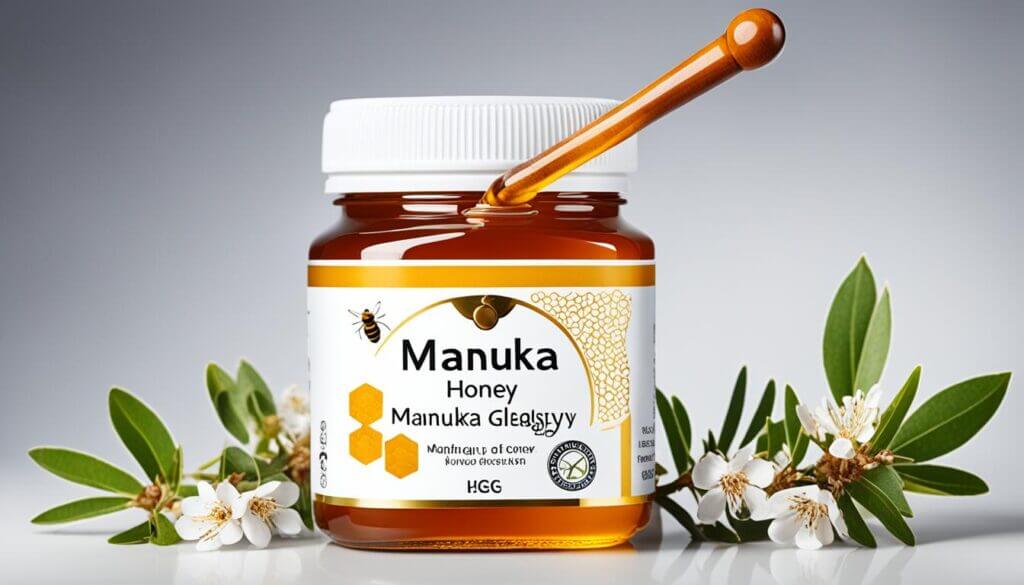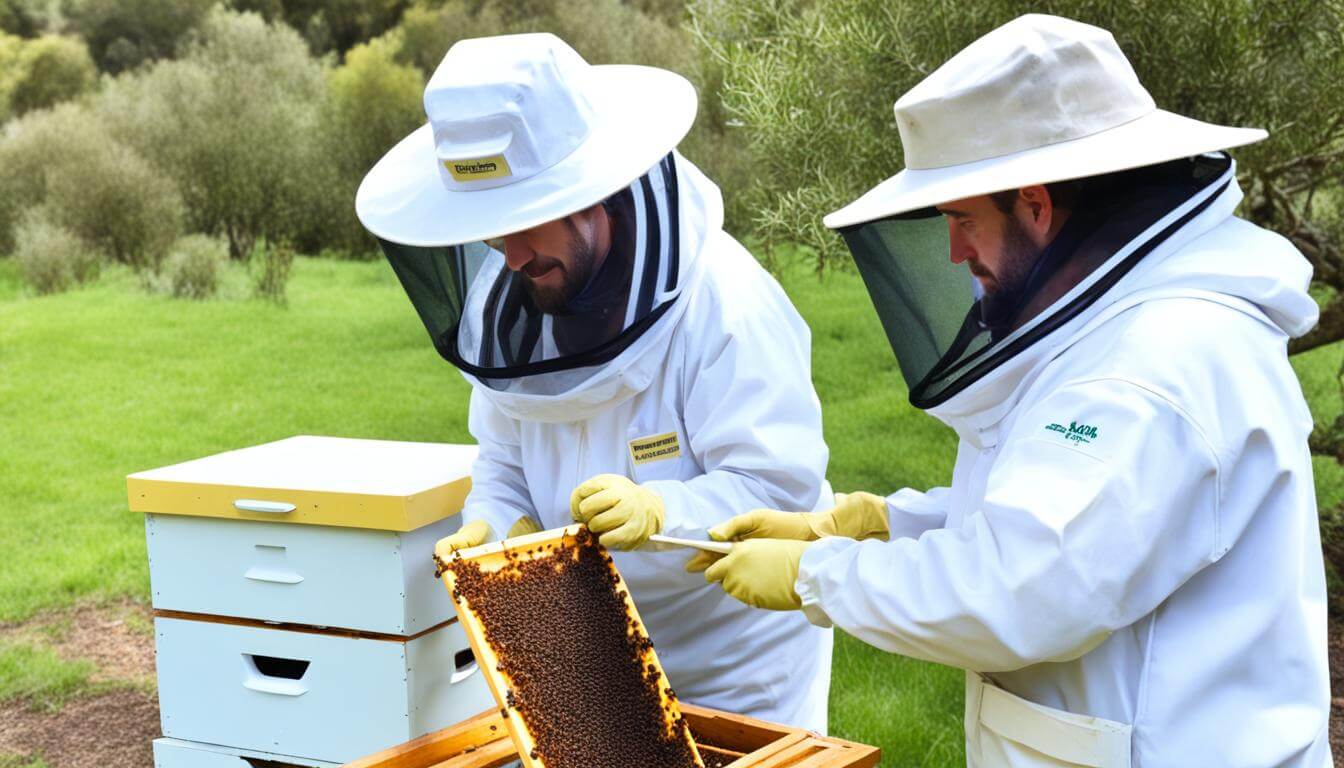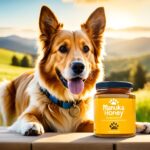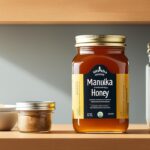In the realm of health elixirs, few are as feted as Manuka honey. Harvested from the pristine forests of New Zealand, this golden treasure is lauded for its potent bioactive properties—but how much do we know about the labyrinth of Manuka honey standards designed to protect its integrity and authenticity? As consumers increasingly seek out this luxurious product, understanding the significance of compliance with honey industry regulations has never been more vital.
From the buzzing hives to the shelf, each jar of Manuka honey tells a story woven through the strict threads of regulation. In a market ever-vigilant against adulteration, navigating these regulations is not just a matter of legal adherence, but a commitment to preserving the legacy of a truly remarkable natural product. Join us as we dive into the intricate world of Manuka honey production, where every drop is a testament to the symmetry of nature and diligence.
Understanding Manuka Honey’s Unique Characteristics
The mystique of Manuka honey is unrivaled in the natural health world, primarily due to its Unique Manuka Factor (UMF). This trademarked quality mark is a measure of the distinctive properties found in honey made from the nectar of the Manuka bush, native to New Zealand. The UMF grading system ensures the presence of key compounds, such as methylglyoxal, dihydroxyacetone, and leptosperin, which are thought to contribute to the honey’s health benefits. Known for its potency and uniqueness, Manuka honey stands out as a natural product that supports wellness in multiple facets.
Manuka honey’s health-promoting prowess is primarily attributed to methylglyoxal (MGO), a compound found in high concentrations in Manuka honey. The UMF rating directly correlates with the levels of MGO, providing a reliable indicator of the honey’s quality and demand among health-conscious consumers seeking natural remedies.
- Antibacterial: Manuka honey is heralded for its natural antibacterial properties, noteworthy in a world seeking organic antimicrobial solutions.
- Antioxidant: It is rich in antioxidants, which aid in reducing oxidative stress and promoting overall cellular health.
- Healing: Traditionally used to aid wound healing, Manuka honey has found its way into modern medical practices, appreciated for its ability to foster a conducive environment for tissue regeneration.
The intimate connection between the bioactive properties of Manuka honey and its health applications is a testament to its standing as a premium product on the global stage. This unique appeal amplifies the need for rigorous standards to govern its production and distribution, ensuring consumers receive genuine Manuka honey with the UMF’s promise of unmatched natural efficacy.
| UMF Rating | MGO Content (mg/kg) | Potential Health Benefit |
|---|---|---|
| UMF 10+ | 263+ | General wellness and immunity support |
| UMF 15+ | 514+ | Enhanced antibacterial and healing properties |
| UMF 20+ | 829+ | Suitable for therapeutic use |
With these distinct qualities, it’s evident why Manuka honey is not just a food product but a holistic health phenomenon. The Unique Manuka Factor symbolizes purity, strength, and the intrinsic value of nature’s offerings, underscoring the honey’s worldwide acclaim and integrative role in health and wellness regimes.

Key Components of Manuka Honey Certification
When it comes to ensuring the authenticity of one of nature’s most treasured products, Manuka Honey Certification plays a pivotal role. It is the bedrock that supports consumer confidence, driving demand for one of New Zealand’s acclaimed exports. Certification programs are designed to verify that the Manuka honey in question adheres to rigorous purity standards, which include a myriad of tests and benchmarks critical for honey authentication.
Key certifying organizations such as the Unique Manuka Factor Honey Association (UMFHA) and the Manuka Honey Appellation Society have developed comprehensive criteria that hone in on several crucial factors. From the concentration of methylglyoxal (MGO) to other signature compounds specific to Manuka honey, their presence and proportions are scrutinized to authenticate the honey’s origin and grade.

The scope of certification isn’t solely focused on chemical composition. It extends to the essence of traceability, ensuring that each jar of Manuka honey can be tracked right back to its beekeeper. Plus, sensory attributes such as flavor, aroma, and texture are evaluated against established standards to differentiate genuine Manuka honey from other varieties.
To illustrate the methodical approach of certification, consider the following factors assessed:
- Presence of unique Manuka honey markers, such as leptosperin
- Verification of MGO levels, a compound central to Manuka honey’s unique properties
- DNA testing for pollen grains specific to the Manuka bush
The distinction that certification provides is not only valuable but vital in safeguarding both producers and consumers against inferior imitations. It’s a testament to dedication across the honey industry for maintaining the highest echelon of product integrity. Let’s delve further into what makes certification a cornerstone of Manuka honey’s global appeal.
| Certification Criteria | Description | Impact on Authenticity |
|---|---|---|
| Unique Manuka Factor (UMF) | Grading system evaluating key signature compounds | Ensures product meets high-performance benchmarks |
| Methylglyoxal (MGO) Content | Active ingredient directly correlated to Manuka honey’s antibacterial strength | Authenticates the honey’s potency and quality |
| Traceability | Documentation from beehive to shelf | Assures consumers of the honey’s origin and journey |
Manuka Honey Certification is more than a label; it’s a promise of quality, purity, and potency. As aficionados and health-conscious shoppers alike continue to be vigilant about the products they consume, understanding and valuing the stringent measures behind honey authentication further enshrines Manuka honey as a jewel of the natural world.
International Standards for Manuka Honey
The world of Manuka honey is bound by strict international food standards and export regulations to ensure that what arrives on the global market is of the highest quality. The Manuka honey grading system is an integral aspect of these regulations, bridging the gap between producers and consumers for a transparent and trustworthy industry. Understanding these standards is crucial not only for compliance but for maintaining the international reputation of this sought-after product.
International food standards for Manuka honey are developed with input from various stakeholders, including government bodies, industry experts, and scientists to ensure a consensus on what defines pure and authentic Manuka honey. Export regulations are then meticulously crafted to match these standards, creating a regulated market space that is beneficial for both exporters and importers.
The significance of the Manuka honey grading system is paramount. This system grades honey based on its antibacterial properties, non-peroxide activity, and levels of methylglyoxal, among others. It ensures that consumers are informed about the potency and purity of the Manuka honey they purchase. Below is an outline of the major grading factors and their international standards:
| Grading Factor | Description | International Standard |
|---|---|---|
| UMF (Unique Manuka Factor) | Indicates the antibacterial quality of the honey. | Ratings from UMF 5+ to UMF 20+, with higher numbers indicating stronger antibacterial properties. |
| Methylglyoxal (MGO) | Compound responsible for Manuka honey’s antibacterial strength. | Measured in milligrams per kilogram of honey (mg/kg), with categories like MGO 100+, MGO 250+, etc. |
| Non-Peroxide Activity (NPA) | The unique non-peroxide, antibacterial effects of Manuka honey. | Similar to the UMF rating, NPA is often directly correlated to UMF levels. |
| Leptosperin | A chemical marker that distinguishes Manuka honey from others. | A specific threshold is set that must be met for a honey to be considered premium Manuka. |
| Dihydroxyacetone (DHA) | A precursor to methylglyoxal; high in fresh Manuka nectar. | Standards set for minimum DHA levels to ensure maturation into rich MGO content over time. |
Regulatory bodies both internationally and locally, such as the Codex Alimentarius Commission and New Zealand’s Ministry for Primary Industries, respectively, play a pivotal role in the enforcement of these standards. They ensure that Manuka honey produced and exported meets global food safety criteria, safeguarding consumer trust and industry reputation.

Whether you are a consumer seeking the health benefits of Manuka honey, a producer aiming to maintain compliance, or an exporter navigating international markets, a thorough understanding of these international standards is foundational. They are the pillars that support and sustain the prestigious Manuka honey market we trust and value today.
Manuka Honey Regulations in the United States
In the United States, Manuka honey is becoming increasingly popular for its unique health benefits. As a result, US regulations under the Food and Drug Administration (FDA) govern the import and distribution of this specialty honey to ensure it meets rigorous safety and quality standards. These regulations are essential in maintaining consumer confidence in the authenticity and therapeutic value of Manuka honey available in the US market.
The FDA standards for honey import, including Manuka, consist of several tests and checks that producers must pass for their product to be accepted on American soil. These measures are designed to protect consumers from mislabeled or adulterated products and to promote fair trade practices. Let’s delve into the key aspects of the FDA’s regulations that affect Manuka honey.
- Label accuracy, ensuring the Manuka honey sold is as described.
- Verification of the presence of characteristic Manuka honey markers, including methylglyoxal.
- Checks for contaminants and residues that could compromise honey quality and safety.
- Adherence to proper food handling and processing practices.
Through the enforcement of these stringent requirements, the FDA seeks to uphold Manuka honey testing protocols and quality controls that preserve the product’s esteemed reputation.
| FDA Requirement | Purpose | Manuka Honey Implication |
|---|---|---|
| Accurate Labeling | Consumer protection and product transparency | Ensures Manuka honey is correctly identified and not mixed with other honey types |
| Characteristic Marker Tests | Product authentication | Confirms the presence of unique Manuka honey compounds |
| Contaminant Screening | Food safety | Guarantees that Manuka honey is free from harmful residues and adulterants |
| Good Manufacturing Practices (GMP) | Quality control | Insures that Manuka honey undergoes safe processing and handling |
Adherence to these US regulations is critical for any producer looking to export Manuka honey to the United States. It ensures not only the product’s purity but also its standing in what is a competitive and discerning market. By aligning with FDA standards, producers can secure their share in the American market, known for its demand for high-quality, authentic natural health products.

Complying with FDA Guidelines for Honey Production
In a bid to ensure that honey consumers enjoy the highest quality products, producers must adhere strictly to the FDA Honey Guidelines. These regulations safeguard food safety and set the parameters for honey production standards, playing a crucial role in maintaining industry compliance. To navigate the complexities of these guidelines, producers must be versed in the key processes and uphold the qualifications that underscore consistent quality in honey manufacturing.
The pursuit of compliance begins with understanding the FDA’s requirements concerning the sourcing of raw materials, ensuring the cleanliness of production facilities, and the truthful labeling of the final product. Let’s delve into the necessary steps honey producers should follow to ensure their operations align with the stringent demands of food safety regulations.
- Ingredient Sourcing: Verify the quality and purity of sourced honey, ensuring that it meets prescribed FDA standards for contaminants and adulteration.
- Facility Management: Implement Good Manufacturing Practices (GMP) to maintain a clean and hygienic production environment.
- Record Keeping: Maintain detailed records of production, processing, packing, and distribution to trace anywhere along the supply chain in the event of an audit or food safety issue.
- Labeling Accuracy: Ensure accurate labeling that includes net weight, origin, and a truthful description of the contents; following the FDA’s guidance on honey labeling to prevent misbranding.
- Food Safety Plan: Develop and execute a preventive controls plan to identify and mitigate any potential hazards in the production process.
By adhering to these protocols, honey manufacturers can achieve and sustain compliance with the FDA Honey Guidelines, thereby ensuring their products are trustworthy and safe for consumers. This not only fosters consumer confidence but also fortifies the industry’s commitment to maintaining high standards of food safety and quality.
Furthermore, proactive compliance with these regulations does not just protect consumers; it also serves as an essential benchmark for producers seeking to solidify their position in the competitive market. By ensuring their products are synonymous with food safety and quality, producers can set their brands apart as trusted names in honey production.
To summarize, achieving harmony with FDA guidelines is not only a matter of legal necessity but also a keystone in building a reputable brand that consumers can rely on for high-quality honey. Adhering to the honey production standards outlined by the FDA is the cornerstone of a thriving, sustainable honey industry.
The Impact of Beekeeping Practices on Manuka Honey Quality
High-quality Manuka honey begins with sustainable beekeeping practices. The meticulous measures that beekeepers take in managing their apiaries play a central role in ensuring the honey’s purity and maximizing the health of the bees. Essential factors such as the strategic placement of hives, attention to bee health, and timing of honey harvest are instrumental in producing Manuka honey that meets stringent apiary standards.
Apiary location is a critical component of sustainable beekeeping, as it affects the bees’ access to the Manuka flowers, which directly influence the honey’s composition. The health of the bees is another cornerstone of beekeeping that cannot be overlooked, as a robust hive results in efficient pollination and honey production. Additionally, the method and season of honey harvest contribute to maintaining the natural properties of Manuka honey, ensuring maximum purity and health benefits to consumers.
- Sustainable beekeeping ensures a low environmental impact and high-quality honey production.
- Apiary standards dictate hive health checks, pest control, and responsible management.
- The purity of Manuka honey is preserved through non-intrusive harvesting techniques.
- Bee health is integral to honey quality, with proper nutrition and disease management being vital.
By focusing on sustainable beekeeping practices, the industry not only nurtures the environment but also provides consumers with a product that is ethically produced and meets the highest standards of honey purity. This relationship between beekeeping rituals and the end quality of Manuka honey underscores the importance of supporting beekeepers who adhere to best practices in apiary management.
Labeling Requirements for Manuka Honey
Understanding the labels on Manuka honey products is crucial for consumers seeking transparency and assurance of product quality. Product labeling serves as an essential source of consumer information, guiding choices and ensuring the honey’s authenticity and efficacy. Each jar of Manuka honey should be clearly marked with its UMF label, indicating the Unique Manuka Factor which reflects the concentration of active ingredients like methylglyoxal. This rating is vital for gauging the honey’s potency and verifying its therapeutic potential.
Additionally, a comprehensive label should provide insight into the honey’s origin, often an indication of its purity and adherence to stringent production standards. Below is an overview of what consumers should look out for in the labeling of Manuka honey:
- UMF Certification: Demonstrates adherence to the Unique Manuka Factor Honey Association standards, ensuring the presence of signature compounds.
- Active Ingredients: Indicates levels of methylglyoxal (MGO), dihydroxyacetone (DHA), and leptosperin, among others.
- Origin: Details the geographical source of the honey, often New Zealand, which is home to the Manuka bush.
- Best Before Date: Assures optimum quality if consumed by a certain date.
- Batch Number: Enables traceability back to the source in case of quality checks or recalls.
- Net Weight: The weight of honey in the jar, typically listed in grams (g) or ounces (oz).
- Producer Information: Details of the manufacturer or packer, permitting informed decisions about the brand’s reliability and production ethics.
Adhering to legal requirements in labeling not only supports consumers in making informed decisions but also protects producers from misrepresentation and reinforces quality standards within the industry. The following table presents a clear line-up of what should be included on the label of a Manuka honey jar, for a better understanding of its significance:
| Label Feature | Description | Consumer Benefit |
|---|---|---|
| UMF Rating | Indicates the quality and purity of the honey based on the Unique Manuka Factor. | Assurance of authenticity and potency. |
| Active Ingredients | Levels of key compounds such as methylglyoxal (MGO), dihydroxyacetone (DHA), and leptosperin. | Indication of health-enhancing properties and product efficacy. |
| Country of Origin | Geographical location from where the honey is sourced, typically New Zealand. | Confidence in the honey’s purity and adherence to production standards. |
| Expiration Date | A date by which the honey should be consumed for best quality. | Knowledge for optimal consumption within the timeframe of peak quality. |
| Batch Number | A unique identifier tied to the production lot of the honey. | Traceability for quality control and accountability. |
| Net Weight | The weight of honey contained within the packaging. | Understanding of product quantity for consistent use. |
| Producer Details | Information regarding the manufacturer or packer of the honey. | Confidence in choosing products from responsible and reputable sources. |
The integration of these elements into the product labeling of Manuka honey not only meets legal obligations but also enhances the consumer’s shopping experience, ensuring every purchase is made with confidence and a clear conscience.
Manuka Honey Regulations
In the ever-evolving landscape of the honey industry, compliance with regulatory standards remains a beacon for quality and safety. Among the different honey variants, Manuka honey, with its unique health benefits, has garnered significant attention, necessitating stringent quality control measures.
regulatory changes become critical in shaping the ethos of trust and authenticity that consumers expect from Manuka honey producers. As the industry is further scrutinized and new research emerges, it’s not uncommon to witness industry updates that adjust previous guidelines to better fit modern practices and findings.
To keep up with the current state of the industry, here are several key themes that have been at the forefront of industry updates and compliance efforts:
- Adherence to internationally recognized standards which set the framework for Manuka honey production and quality control.
- Education for producers about best practices in sustainable harvesting, labeling, and distribution that aligns with compliance and purity benchmarks.
- Incorporation of evolving regulatory changes, often influenced by scientific advancements in understanding the unique properties of Manuka honey.
Such initiatives ensure that the consumer accesses high-quality Manuka honey while upholding industry integrity, creating a win-win situation for the market and its patrons. Maintaining an up-to-date understanding of these regulations is essential for all stakeholders within the Manuka honey sphere.
Conclusion
Throughout this examination of the intricate world of Manuka Honey Compliance, we have gleaned vital insights into the stringent industry standards that safeguard the authenticity and therapeutic qualities of this valuable health elixir. Regulations undeniably serve as the pillars of trust between consumers, producers, and regulatory entities. By fostering an environment of strict adherence to these guidelines, the integrity and reputation of the Manuka honey market are preserved. Consumers, thus, can continue to confidently enjoy the health benefits of genuine Manuka honey, assured in the knowledge that the products meet high standards of purity and quality.
The significance of industry standards cannot be overstated, as they are not only essential for protecting consumers but also crucial for supporting honest producers who invest time and resources in maintaining compliance. These standards ensure a level playing field by curtailing the sale of fraudulent products, ultimately contributing to a more robust industry and a healthier marketplace. Quality assurance emanates not only from competent authorities and certification bodies but also from the diligent beekeepers and honey producers who observe best practices to deliver a superior product.
In conclusion, empowerment through information is key to making informed consumer choices. As we bid farewell to the labyrinth of rules and requirements surrounding Manuka honey, we are reminded of the collective responsibility all stakeholders bear. Consumers must continue to educate themselves about the provenance and properties of the products they choose. Producers, on the other hand, must unwaveringly adhere to regulations, ensuring that every jar of Manuka honey reflects the purity and effectiveness for which it is renowned. Together, through shared commitment to excellence, the legacy and benefits of Manuka honey will remain protected for generations to come.




